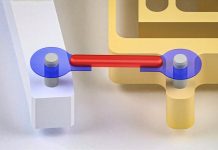
Every electronic device, from laptops to toothbrushes, has one thing in common: a printed circuit board, or PCB.
These flat boards, usually green in color, carry the copper wires and electronic components that make devices work. But while they are essential, they are also a big problem for the environment.
Conventional circuit boards are made from a tough laminate of fiber-reinforced epoxy resin, a material derived from petroleum.
Once these boards reach the end of their life, they cannot be recycled.
Proper disposal requires expensive processes such as burning them in special furnaces with advanced air filters. Considering the massive number of discarded devices worldwide each year, circuit boards represent a growing waste challenge.
Researchers at Empa, the Swiss Federal Laboratories for Materials Science and Technology, are trying to change that.
Led by Thomas Geiger, the team has created a sustainable alternative to traditional PCBs.
Instead of using epoxy resin, they developed a wood-based substrate that is strong enough to function like conventional boards, but completely biodegradable.
Their findings, published in Scientific Reports, show that the new material can even be used in real electronic devices—like a working computer mouse.
The secret lies in a natural mix of cellulose and lignin, which are compounds found in wood. This material, called lignocellulose, is usually a waste product left over after extracting other chemicals from wood.
By grinding the lignocellulose in water, the researchers broke the fibers into thin, thread-like structures called fibrils.
When this slurry was squeezed under high pressure and dried, the fibrils locked together into a dense, solid mass. The lignin naturally present in the material acted as a binder, giving the board strength. The researchers call this process hornification.
The resulting boards are nearly as strong as epoxy-based PCBs, though they are still sensitive to water and humidity.
But according to Geiger, that’s not a flaw—it’s a feature. To be biodegradable, the material must let in some water so that microorganisms like fungi can break it down. If it were completely waterproof, it would never compost.
To test their boards, the team worked with industrial partner PROFACTOR GmbH in Austria. They printed conductive tracks on the boards and attached electronic components, creating working prototypes such as RFID cards and a computer mouse.
At the end of its life, such a device could be composted.
The carrier material would break down naturally, leaving behind the metallic parts that could then be recovered and recycled.
The researchers are now focused on improving the water resistance of the boards without losing their biodegradability.
They also plan to create more demonstration devices as part of the EU HyPELignum project, which runs until 2026. Ultimately, they hope to partner with European companies to bring the technology into mainstream production.
As Geiger points out, many electronic devices only last a few years before being replaced. It doesn’t make sense, he says, for their components to remain intact for centuries.
Biodegradable boards could help electronics keep up with our short device lifespans—while dramatically reducing the burden of electronic waste.



